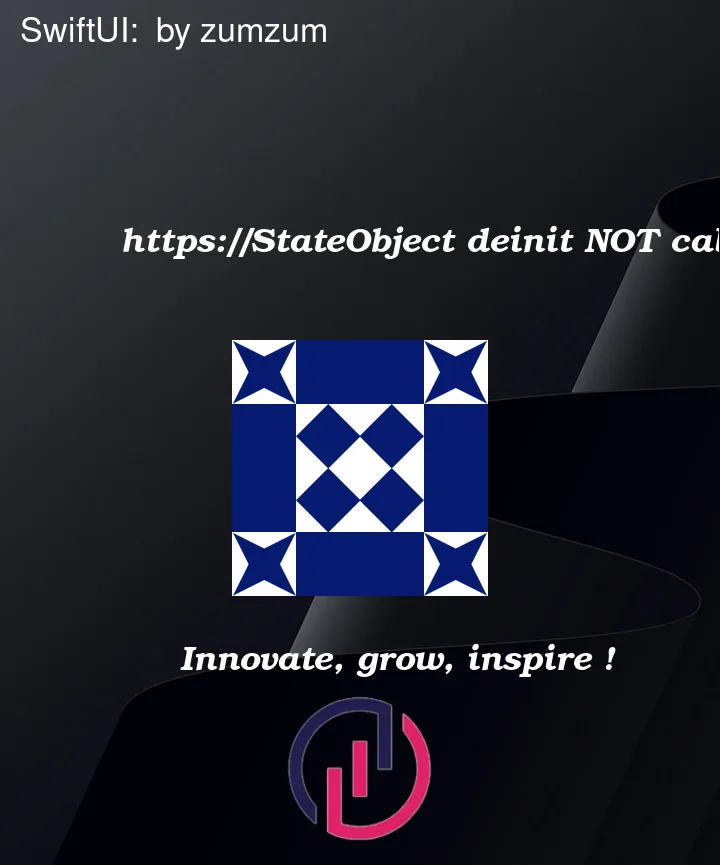I have the following code:
struct ContentView: View {
@Environment(.managedObjectContext) private var viewContext
@FetchRequest(
sortDescriptors: [NSSortDescriptor(keyPath: Item.timestamp, ascending: true)],
animation: .default)
private var items: FetchedResults<Item>
var body: some View {
NavigationView {
List {
ForEach(items) { item in
NavigationLink {
Text("Item at (item.timestamp!, formatter: itemFormatter)")
} label: {
// Text(item.timestamp!, formatter: itemFormatter)
ItemCellView(model: ItemCellViewModel(item: item))
}
}
.onDelete(perform: deleteItems)
}
.toolbar {
ToolbarItem(placement: .navigationBarTrailing) {
EditButton()
}
ToolbarItem {
Button(action: addItem) {
Label("Add Item", systemImage: "plus")
}
}
}
Text("Select an item")
}
}
private func addItem() {
withAnimation {
let newItem = Item(context: viewContext)
newItem.timestamp = Date()
do {
try viewContext.save()
} catch {
// Replace this implementation with code to handle the error appropriately.
// fatalError() causes the application to generate a crash log and terminate. You should not use this function in a shipping application, although it may be useful during development.
let nsError = error as NSError
fatalError("Unresolved error (nsError), (nsError.userInfo)")
}
}
}
private func deleteItems(offsets: IndexSet) {
withAnimation {
offsets.map { items[$0] }.forEach(viewContext.delete)
do {
try viewContext.save()
} catch {
// Replace this implementation with code to handle the error appropriately.
// fatalError() causes the application to generate a crash log and terminate. You should not use this function in a shipping application, although it may be useful during development.
let nsError = error as NSError
fatalError("Unresolved error (nsError), (nsError.userInfo)")
}
}
}
}
private let itemFormatter: DateFormatter = {
let formatter = DateFormatter()
formatter.dateStyle = .short
formatter.timeStyle = .medium
return formatter
}()
struct ContentView_Previews: PreviewProvider {
static var previews: some View {
ContentView().environment(.managedObjectContext, PersistenceController.preview.container.viewContext)
}
}
struct ItemCellView: View {
@StateObject var model:ItemCellViewModel
var body: some View {
Text(model.item.timestamp!, formatter: itemFormatter)
.foregroundColor(.blue)
}
}
class ItemCellViewModel: ObservableObject {
@Published var item:Item
init(item:Item) {
self.item = item
}
deinit {
print("ItemCellViewModel EDINIT (self)")
}
}
It draws this:
PROBLEM:
ItemCellViewModel deinit is NOT called after I swipe to delete the item.
Can someone tell me why the ItemCellViewModel sticks around even after the ItemCellView is gone?
This is a simplified version of a codebase I am working in. I need that model to go away when the view is "deleted" by the user. Why is SwiftUI keeping ItemCellViewModel around??





2
Answers
View is not deleted in a fact (just removed from visible area) because List caches some number of views (visible area + ~2) and StateObject is persistent storage of view which keeps its state. So observed behavior is by-design.
Get rid of the view model object, in SwiftUI we use value types and the View struct is the view model that SwiftUI uses to create and update UIKit/AppKit views on our behalf. Learn this in SwiftUI Essentials WWDC 2019. Also you can’t nest an ObservableObject inside an ObservableObject either. To fix this change the ItemCellView to this: